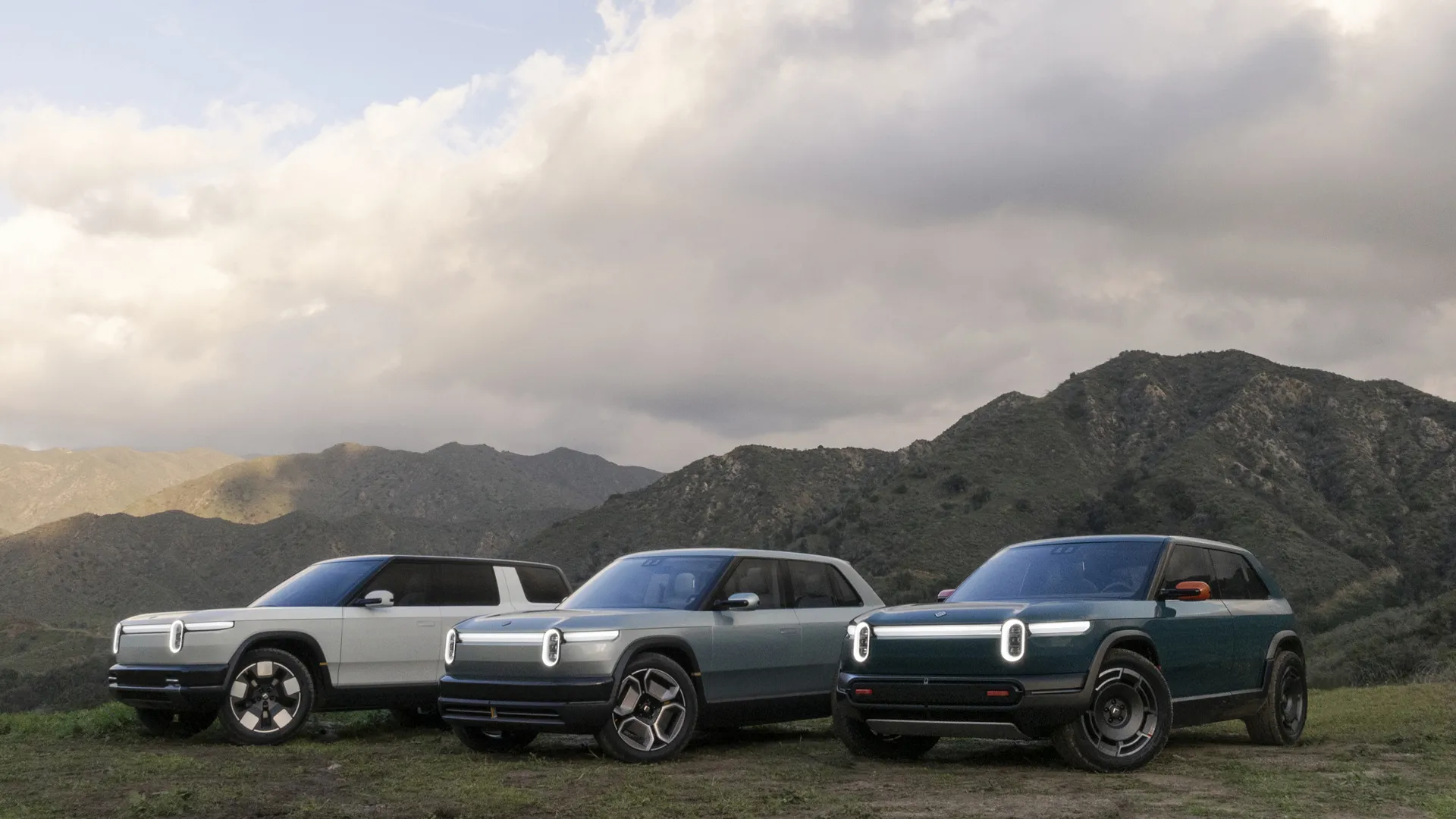The new R2 and R3/R3X were inevitable releases on Rivian’s road to the top
Yesterday’s launch event was another example of why I find Rivian so fascinating. In just over 30 minutes they launched the wildly anticipated R2 electric SUV. But they also announced two entirely unexpected vehicles in the R3 and R3X. If this formula feels familiar, it’s the same Master Plan that Elon famously announced back in 2006 and carried out to perfection. So how does Rivian compare?
The Existing Vehicles
If you were starting a car company in the United States, it would probably make sense to identify the most popular vehicle types. And that’s exactly what Rivian did. Pickup trucks and SUVs are the most purchased vehicles in America. They’re doing what Tesla did, but they’re starting with trucks instead of sedans, and like Tesla, they started with high-end luxury models enabling them to ramp production and demand generation.
R1T (Model S)
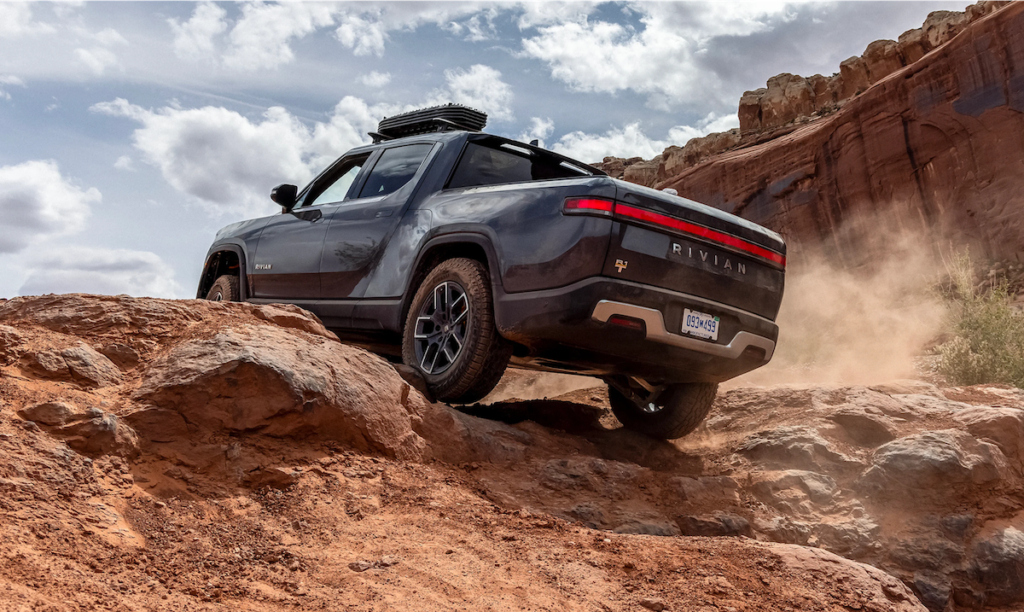
When the R1T launched in 2021 it made a splash. The impact was so big that Rivian was able to IPO and watched their market cap soar to over $100 billion (more on that later). Innovative features like the Gear Tunnel and a sleek/meets traditional pickup truck design made it a stunner. Then the reviewers got their hands on it, and to say they were impressed would be the ultimate understatement. A group from MotorTrend took it coast to coast on the rugged Trans American Trail and were blown away by how it handled even the most harrowing off-road obstacles. While it’s fairly common to see the R1S compared with the Tesla Cybertruck, I would say it is much more comparable to the Model S – the one that paved the way for the others.
R1S (Model X)
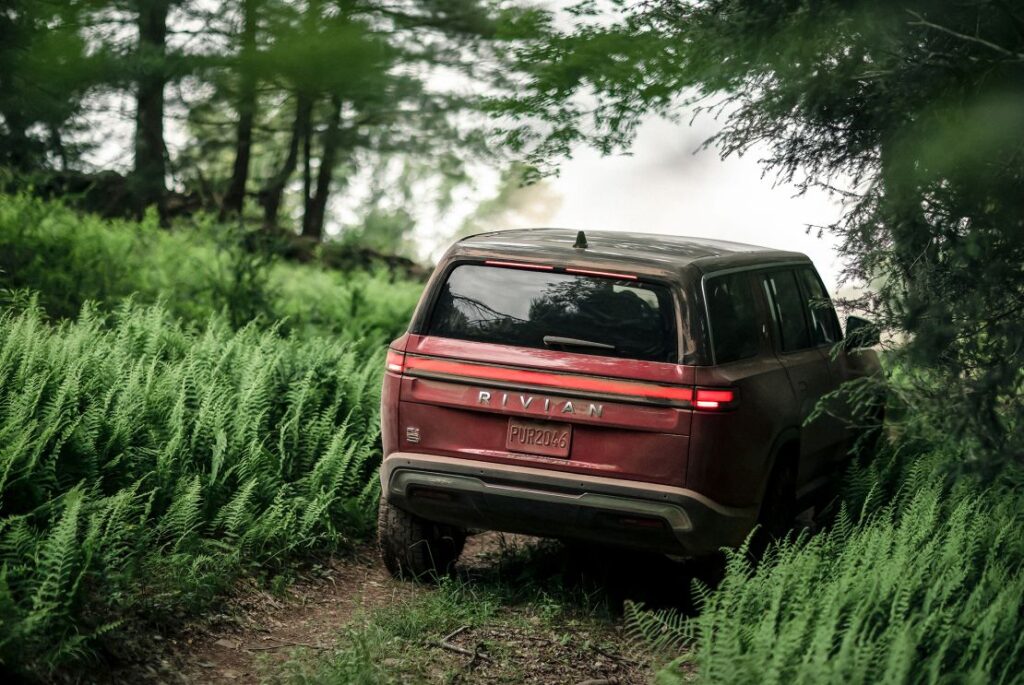
While the R1T launched the company, its sister-vehicle, the R1S offered a somewhat more practical and widely sought category – the SUV. The R1S is no slouch and while it lacks the gear tunnel, it makes up for it with seating for 7. The R1S comps nicely with the Tesla Model X, as it serves the luxury suburban family. But it also offers the off-road, adventure seeking opportunity of the R1T.
Commercial Van (Semi)
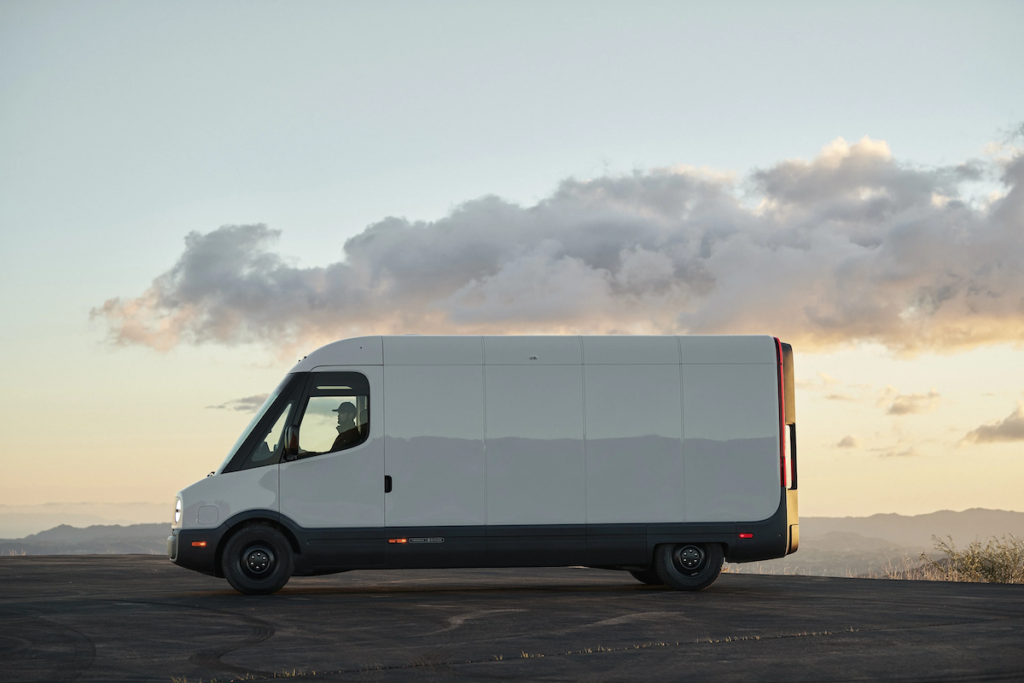
Unlike Tesla, who opted for the freeway-friendly Semi, Rivian chose to develop the Commercial Van, in partnership with Amazon, focused on last-mile delivery. This makes a ton of sense as the vehicle can drive all day and charge overnight at its home base without missing a beat, unlike the Semi, which would have difficulty finding fast charging over its interstate journey. Amazon took delivery of 10,000 of these vans, and you can now see them in the wild. On top of that, they’ve now opened up the program to other companies who want to hop into a fleet of the cleverly designed electric vans.
The Next Generation
This new launch brings Rivian to the next phase of their product line – the affordable, mass-market models.
R2 (Model Y)
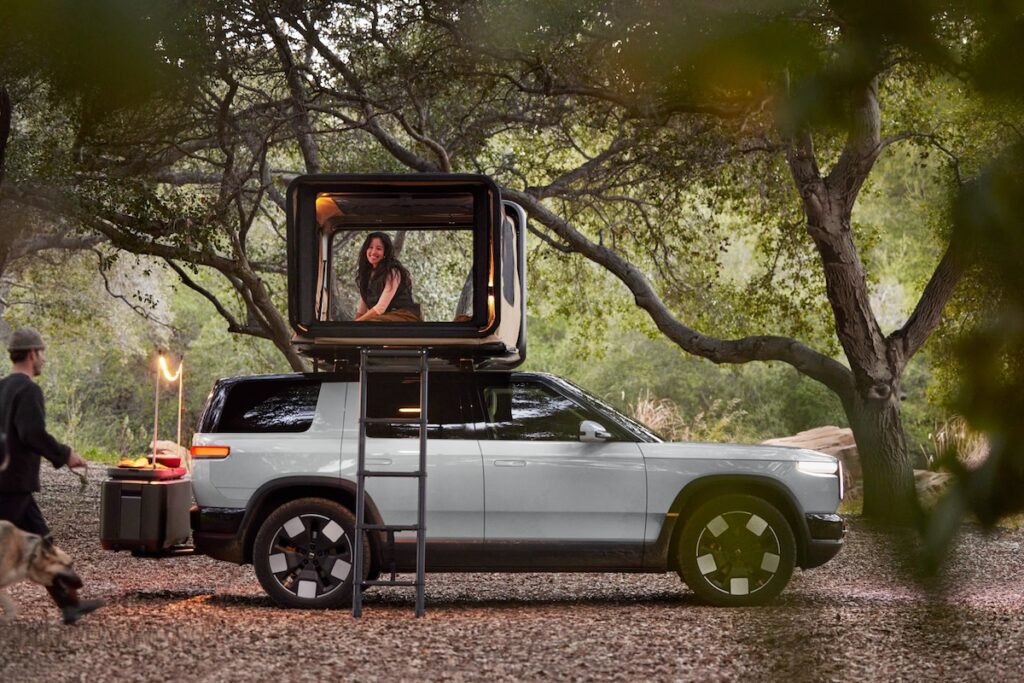
The R2 is pretty simply a scaled down R1S. Sound familiar? Good because that’s what Tesla did when they launched the Model Y which very much resembles a scaled down Model X. The main difference I see here is that the R2 has several cleverly designed features that the R1S does not have – including the slide down rear window and vented rear windows, some new clever haptic roller knobs on the steering wheel, and complete lay flat seats front and back for camping (not to mention two gloveboxes vs zero for the R1). By comparison the Model Y seems to be mostly stripped of the more innovative design features of the Model X. Like the Model Y, the R2 aims to provide an SUV to everyone else.
R3 and R3X (Model 3)
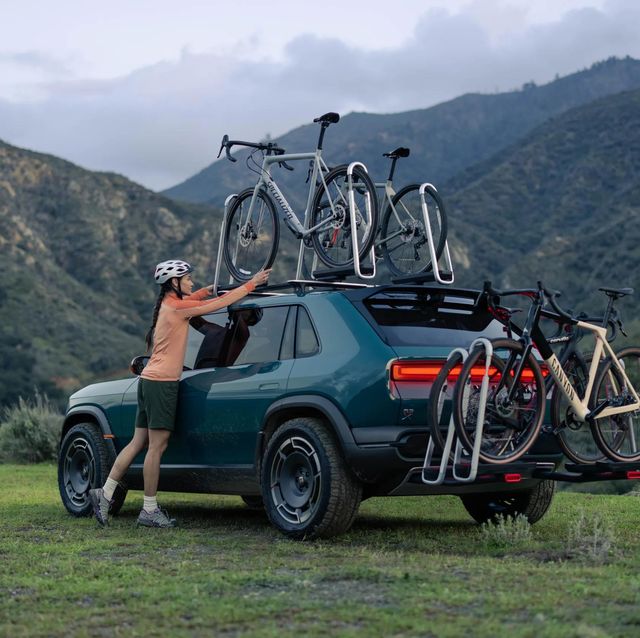
The R3 and R3X can most closely be compared with the Model 3, although I think you could argue that the designers at Rivian have taken a much more creative spin opting for what reminds me of a rally-tuned VW Rabbit. Again they’ve included an array of exclusive, clever design features that includes a genius multi hatch tailgate. The X version even takes the rally styling up a notch – looking like a futuristic dune buggy.
That said, they did take a page out of the Model 3 / Model Y playbook – drivetrain sharing. Just like Tesla, Rivian is building both the R2 and R3 on the same drivetrain and battery packs, further enabling them to scale with some serious flexibility. And of course, the R3 should be the most affordable of all Rivian models, giving them true scalability into the mass-market.
Brand and Marketing
Tesla built their brand as a pioneer, making electric vehicles normal, or even cool, and that worked tremendously well. Naturally, Tesla’s success inspired automotive stalwarts and startups alike to follow in their footsteps. And now that being an EV startup isn’t quite enough to move the needle, Rivian had to find their own angle.
They chose the Outdoors Adventure niche, and they went all in.
Capability
First off, they built some very capable off-road vehicles in the R1 series – which they expertly showed off in their own torture testing videos in deserts, snowy tundra, and rock crawling environments alike. They very publicly competed in and won the Rebelle Rally (an 8-day all-female off-road rally through the desert).
They even beta tested their R1Ts as early as (2019) with the production crew of the documentary TV series “The Long Way Up”, that followed Ewan McGregor and Charley Boorman as they road their motorcycles over 13,000 miles from the tip of South America to Los Angeles – over some fairly questionable terrain I might add.
Design
Rivian’s product is filled with adventure-inspired tech including a security system called Gear Guard which locks with the sound of a bird chirp, and they even have a pop-out camping kitchen option in the R1T’s unique gear tunnel. Their color palettes are nature-inspired and a stark contrast to options you find with the mainstream brands and even Tesla.
Their version of the Tesla Supercharger Network is called the Rivian Adventure Network, and places its chargers near National Parks and other popular outdoor adventure destinations.
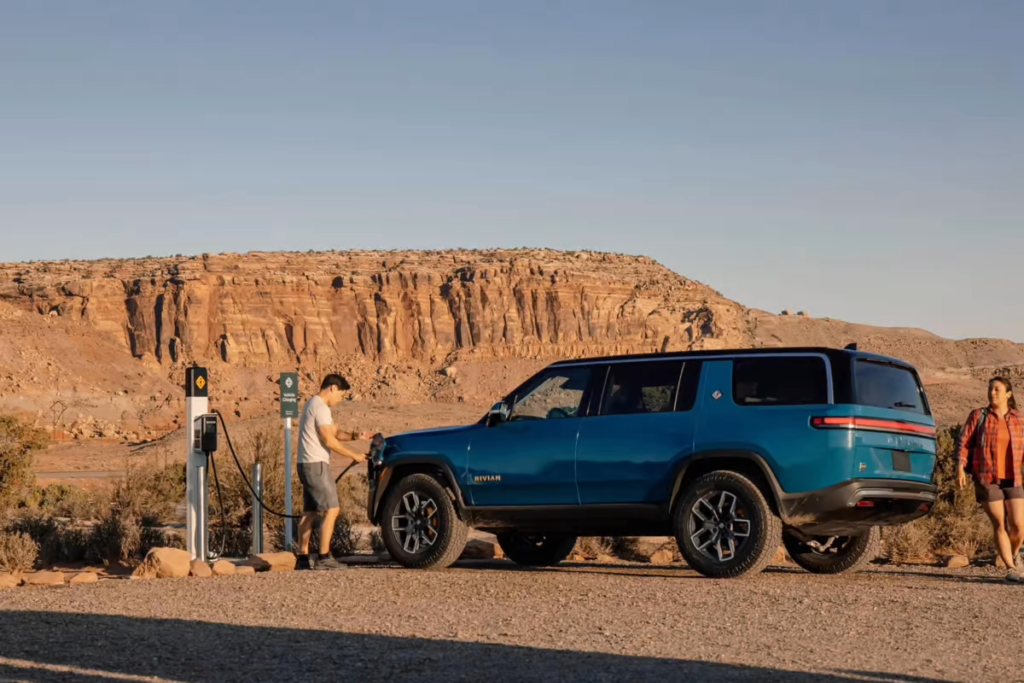
People
Even their CEO, RJ Scariange, gives vibes of a plaid-clad, silicon valley Surfer, fly-fisherman, and ski bum. But he’s also very public about being a family-man, even showcasing his kids as they explore different elements of the Rivian ecosystem.

If Tesla and Land Rover had a baby it would probably be Rivian. But Rivian has done perhaps a better job than any mainstream automaker in sticking with their niche. And what’s funny is that most of the buyers probably won’t even take their R1S into the backcountry. The aspiration, affiliation, capability, comfort, and practicality make it desirable enough that it works just as well in the suburbs as on the summit, and they’ve made an effort to make their product and brand extremely approachable.
The Markets and the Road Ahead
While the product and brand seem at face-value to be a home run, it hasn’t been all sunshine and roses. While Rivian’s stock shot up at IPO, it also came crashing down due to a variety of factors including high year over year losses – something that Tesla also experienced multiple times in the mid-late 2010s as they were working toward the model 3 (apparently it costs a lot of money to start an automotive company from scratch).
Nevertheless, their hope now is they can make it to see the R2s rolling off of the production line in time for them to start capitalizing on their own master plan. Rivian seems to be off to a good start with manufacturing, deliveries, customer satisfaction, and community building, and now two new “affordable” models to boot. If they succeed they may just find themselves in familiar company at the top of the mountain.
Working on your own hardware product marketing or content marketing strategy? Machine can help with that.
